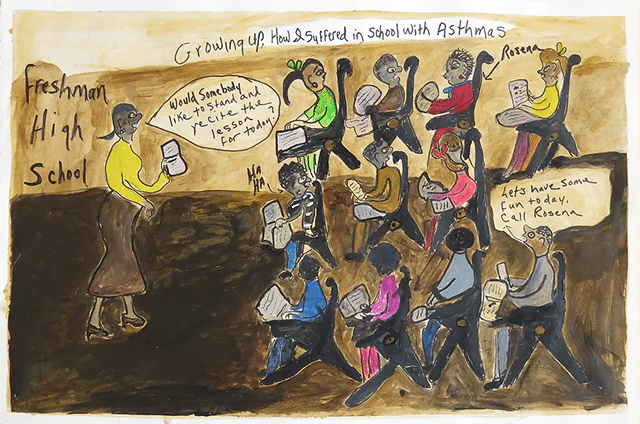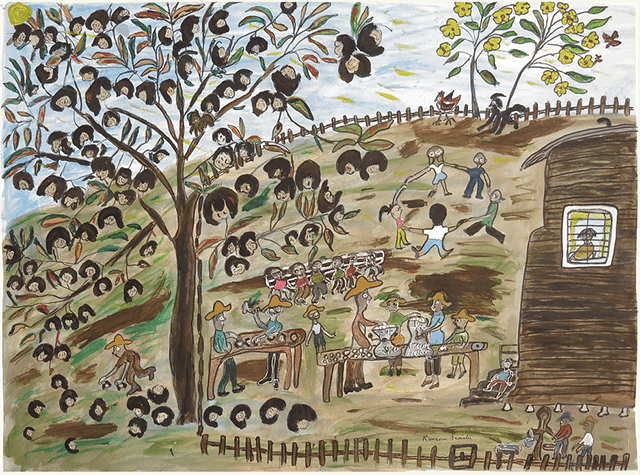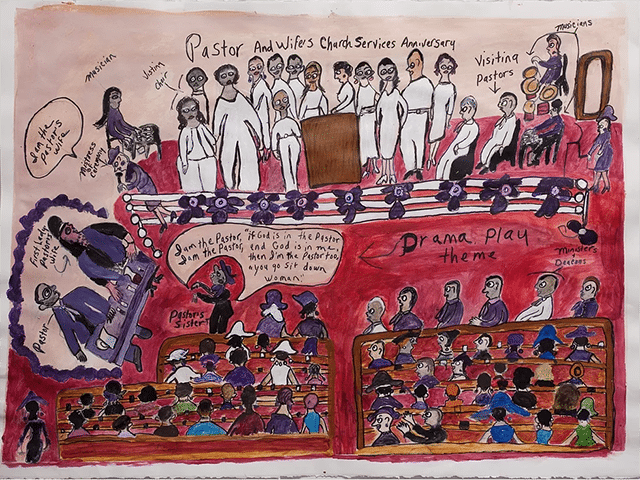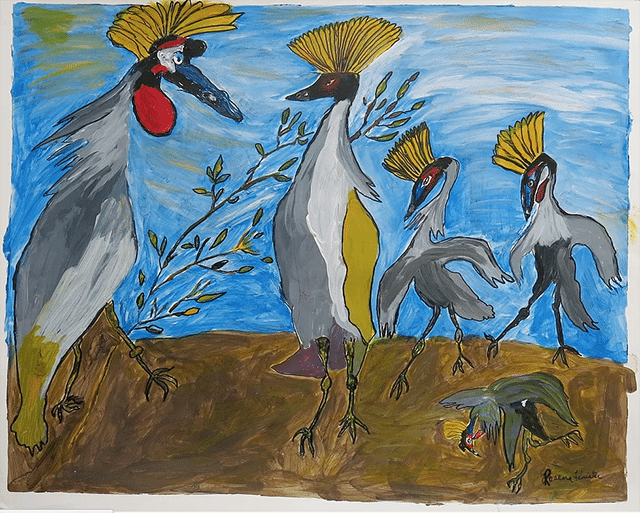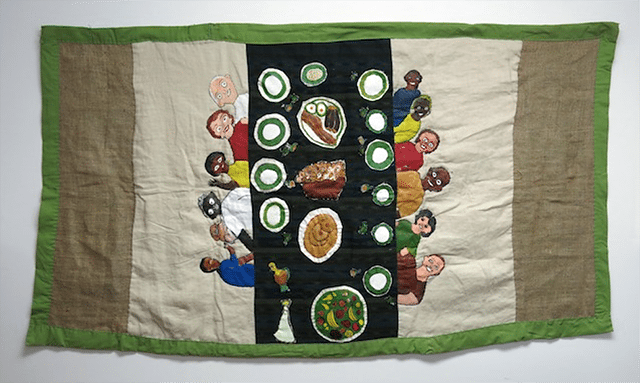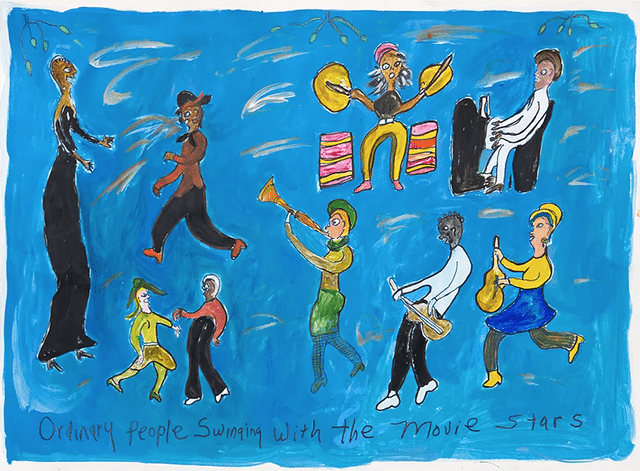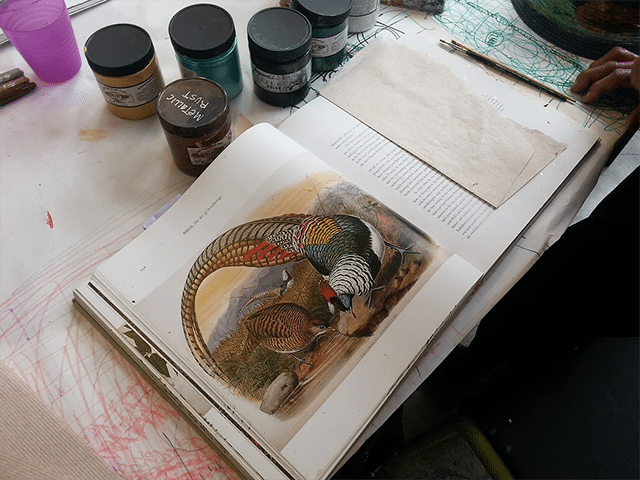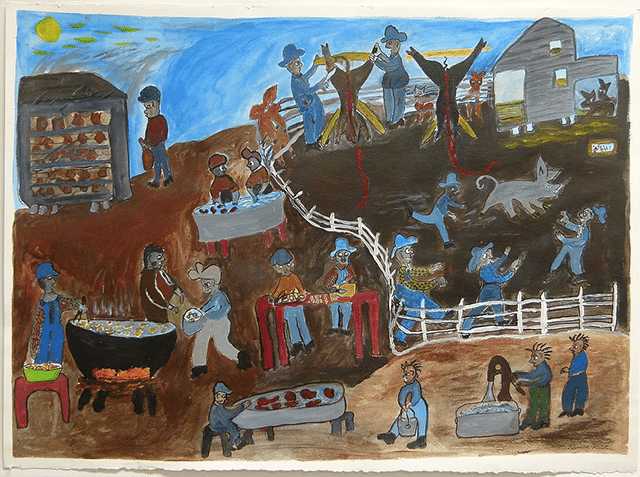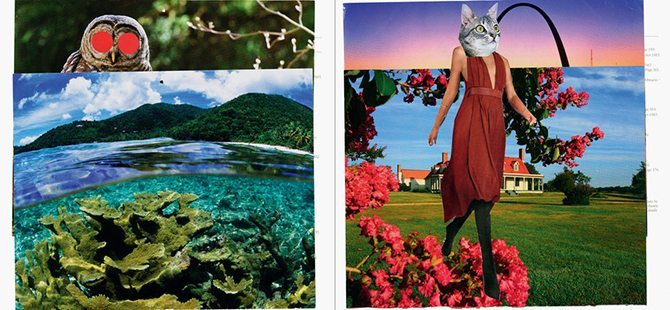 Meet the Disabled Artists Creating a New Space for Talent in the Art World
Meet the Disabled Artists Creating a New Space for Talent in the Art World
At the Creative Growth Art Center, a professional studio for artists with physical and intellectual disabilities, men and women gather in a shared workspace filled with paint, ceramics, and endless opportunities for creativity and joy.
By Jonathan Parks-Ramage
August 17, 2016
Wall Street, 1987. A group of executives convenes in a mile-high boardroom. The atmosphere is tense, filled with the conflicting ambitions of ruthless stockbrokers.
"Buy low, sell high," their CEO decrees.
Suddenly, a woman dressed as the Kool-Aid Man interrupts the proceedings.
"Who wants to buy some Kool-Aid?" she yells.
The room erupts into cheers. Businessmen sip Kool-Aid from champagne flutes as Whitney Houston's "I Wanna Dance With Somebody" blasts over the speakers. The Kool-Aid Woman lip-syncs to the song as the meeting descends into chaos.
This is not, of course, a scene from actual Wall Street history. It is taken from a surreal video short, titled Three Moments in the Life of the Kool-Aid Guy, by rising contemporary artist Susan Janow. Though Janow's CV reads like those of other emerging stars in today's marketplace—with major exhibitions in Paris, New York, and Berlin—her personal biography is markedly different than those of her peers. She did not study at Yale, the Rhode Island School of Design, or any of the country's top fine arts programs. Janow is developmentally disabled. She has spent the entirety of her professional career working at the Creative Growth Art Center, a professional studio for artists with physical and mental disabilities.
Janow's video is one of the first pieces I see upon visiting Creative Growth's headquarters in Oakland, California. It is on display in the center's gallery, which exhibits new media works from the center's artists. The gallery is connected to Creative Growth's studio space—a vast, open-plan workroom with lofted ceilings and large windows.

"Creative Growth is an amazing creative community of artists, volunteers, clients, staff... we're all pretty much equal here. That's a really unique environment when you look at other programs for people with disabilities. They have a voice here," says Becki Couch-Alvarado, the center's executive director, as we tour the studio. "I don't think there are many opportunities in their lives for them to have that voice, where they're the focus of attention in a positive way."
Approximately 90 artists are assembled here, divided into groups and sitting at huge, white worktables. Creative Growth is equipped with resources to work on projects in any medium: painting, drawing, ceramics, embroidery, woodwork, and video. Staff members assist the artists, providing them with materials or facilitating the use of a kiln or table saw. The philosophy of Creative Growth is that these artists are inherently gifted—and only need space and support to realize their visions.
"I think everybody has a creative impulse, right?" Couch-Alvarado says, motioning to the workroom. "If you give someone the opportunity to use that impulse, they will. That's what we're doing here... and everybody has something to say."
Creative Growth nurtures bold new voices, and the art world is listening with increased interest. In recent years, Creative Growth has seen its artists enter permanent collections of museums like the Museum of Modern Art (MoMA), the Smithsonian, and the American Folk Art Museum. The center's clients have exhibited in art fairs and galleries worldwide, entered into collaborations with major brands such as Marc Jacobs and Barneys New York, and are privately collected by celebrities including Lady Gaga and Michael Stipe.
I sit down with Janow during her lunch break, curious to meet the artist behind the Kool-Aid video. Janow brought her preferred meal today: a hot dog (no bun or condiments), two packets of red Jell-O, and fruit punch Kool-Aid. Janow, who is 36, commuted to Creative Growth today from her home in San Leandro, where she lives with her stepmother. This is a common reality for many of Creative Growth's artists: some are capable of living on their own, but others with more severe disabilities reside in supported living centers or with relatives. Janow sports glasses and a near-permanent smile. She is gregarious and outgoing, speaking in loud staccato bursts, punctuated by laughter.
Janow explains that the idea for the Kool-Aid video started because she simply loves Kool-Aid. "I'm a Kool-Aid drinker. I just came up with the thing. I said, 'I drink Kool-Aid, so... why the heck not do a Kool-Aid commercial?'" she says, attacking her hot dog with a plastic fork. Janow, a kinetic ball of energy, adds that she also loves Whitney Houston.
Apart from videos, Janow works with paint, wood, and ceramics, but drawing is her favorite medium.
Janow is also best known for her drawings: intricate geometric grids, rendered by hand in a stunning range of color. They have been exhibited at major art fairs—including Frieze, DDessin Paris Contemporary Drawing Fair, the Outsider Art Fair (in Paris and New York)—and will soon be featured in a large-scale installation in Anthropologie's Palo Alto store. Janow is successful enough to break out on her own but has no desire to leave Creative Growth; it is essential to her creative process and identity.

"I still come here because I love this place. I will not quit this place because I love it so much. This place is like home away from home number two. Once I got here, I was like, 'These are my people.' These are my people, and I'm sticking to it," Janow asserts.
This sentiment is shared by everyone I speak with at Creative Growth—both artists and staff. It was this unique environment that inspired Matt Dostal, now a ten-year employee, to first volunteer. "[When I first came here] I was completely moved by everything: the quality of art, the incredible artists—but also the sense of community," Dostal recalls. We speak in Creative Growth's woodworking area.
"We cultivate relationships that are part coworker, part friend, part family member. We spend more time with each other than most of our families. Many people with developmental disabilities are parked in front of the TV for the day, so this is an incredible social component for them," Dostal says.
"I found a calling I didn't know was out there."
Clearly, the program is a transformative experience for the artists, but it can be equally pivotal for the staff. "[Before Creative Growth] I studied art. But I was listless. I was working weird jobs," Dostal recalls. "This place grounded me... I found a calling I didn't know was out there. It's an incredible fusion of supporting an underserved and vulnerable population, coupled with intense creativity."
Dostal introduces me to John Hiltunen, another of Creative Growth's emerging stars. Hiltunen is 67, bald, and wears a plain T-shirt. Suspenders stretch across his stocky torso, holding up blue jeans. He sits at a table, working on a wood-mounted collage. He's manipulating a magazine cutout of a headless fashion model, gluing a dog face on her shoulders. The result is an absurdly chic Labrador puppy—sporting a sexy red jumper.
Hiltunen says he got the idea to do collage after a "special artist" visited Creative Growth a few years ago and the center's gallery displayed one of his collages. Dostal, observing our conversation, clarifies that it was noted collage artist Paul Butler.

Since then, Hiltunen has worked exclusively in collage. His work typically features comically composed animal/model mash-ups. These high-fashion non sequiturs have gained serious traction in the contemporary art market; Hiltunen's work has exhibited at prominent galleries like White Columns in New York and major contemporary art fairs such as Frieze and the New Art Dealers Alliance in Miami. Though his resume reads like that of a jet-setting art star, Hiltunen enjoys a much simpler lifestyle. Hiltunen first moved to the Bay Area from Texas to live at Serra Center, an independent and supported living center for adults with developmental disabilities.
"I've lived with [Serra Center] for the whole 39 years I've been [in the Bay Area]," Hiltunen explains. "First, they had a bunch of dormitories on a hill, and I lived there. But then I moved out, and... I've been living on my own for about 30 years. I'm still with the Serra Center. But I'm with the independent program."
Hiltuen lives with his wife, Carol, who also attends Creative Growth. They have been married for 29 years, and they met at Serra Center started coming to Creative Growth at the same time.
Hiltunen leads me to another table where he introduces me to his wife. She works on a sewing project as we chat about their relationship; she tells me that it's nice to be married to a fellow artist because it gives her more encouragement to do art.
Towards the end of our conversation, the room begins to stir as everyone migrates toward the lunchroom for today's big event: a meeting about the second issue of Creative Growth Magazine. Creative Growth artists are the magazine's sole contributors, and its publishing is a community effort. The first issue was carried in select galleries and bookstores in New York, Los Angeles, and San Francisco. The publication was the brainchild of volunteer/journalist Matt Haber and staff member Kathleen Henderson.

Haber and Henderson stand in front of the lunchroom as artists find seats for the meeting. The room buzzes with anticipation; the theme for the second magazine is about to be announced.
"We're here to discuss the next issue... and we have a theme: It's love!" Henderson announces.
There is a thunderous round of applause for love.
"Let's hear it for love!" Haber yells out.
"So, all kinds of love: brotherly love, sisterly love, carnal love, love of the vending machine," Henderson elaborates.
"What about love of animals?" asks an artist named Lisa, petting a raccoon stuffed animal.
"Yes, love of animals," Haber encourages.
"What else do we want to do in this magazine? What are some of your ideas?" Henderson asks.
The 90 or so artists begin shouting out topics for the love issue. Their ideas come rapid-fire as Haber takes notes: pets, couples, cruises, friendship, space, bed, fashion, teachers, horoscopes, Pokémon, God, and taco grease.
"I just want to say," Lisa pipes up, mid-brainstorm, "owning a dragon—I want an article about that in the magazine."
"About owning a dragon?" Henderson asks.
"Yeah, because when you own a dragon, you don't really know what you're getting yourself into," Lisa says, inspiring a wave of giggles.
"What about love of hot dogs?" Henderson asks. "I think there's someone at Creative Growth that really loves hot dogs..."
"That's gotta be me!" Janow shouts. The room breaks into knowing laughter.
"All right, we have a lot of good ideas. Who's excited for the next magazine?" Haber calls out. The room whoops and hollers.
The meeting adjourns. Everyone heads back to their workstations, chatting excitedly. The studio hums again with activity as artists dive into their projects.
I stay behind for a moment, perusing the previous issue of Creative Growth Magazine. In the back pages, I discover horoscopes written by the artists. The astrological predictions range from humorous ("Pisces: Be careful not to say anything racist at Fisherman's Wharf or you will have an accident.") to cryptic ("Libra: In 1 month, 3 Spanish models will come to America from Spain.") to blunt ("Virgo: You are never gonna change."). But it is the Aries forecast that resonates with me: "You will go on a trip to the happiest place on earth." Looking out at the workroom—brimming with creativity, joy, and life—it occurs to me that I already have.
read article




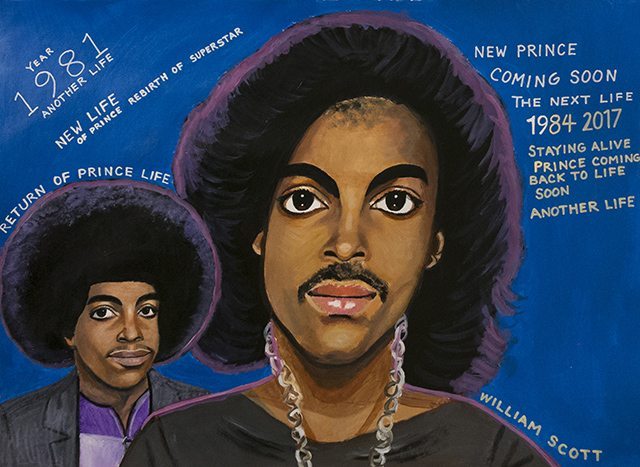


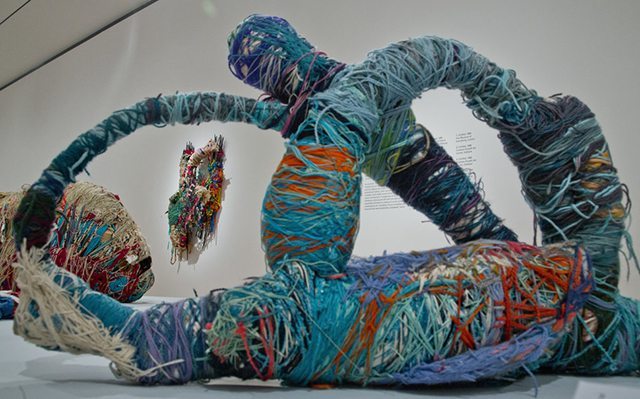

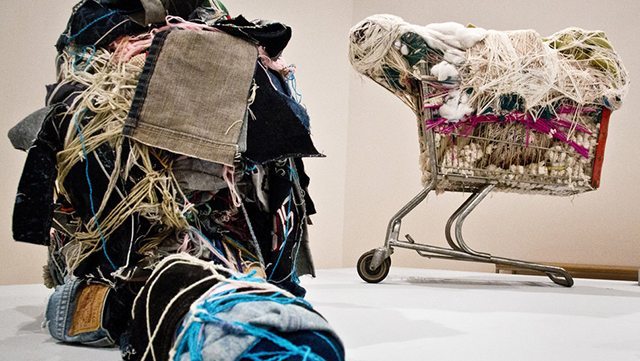

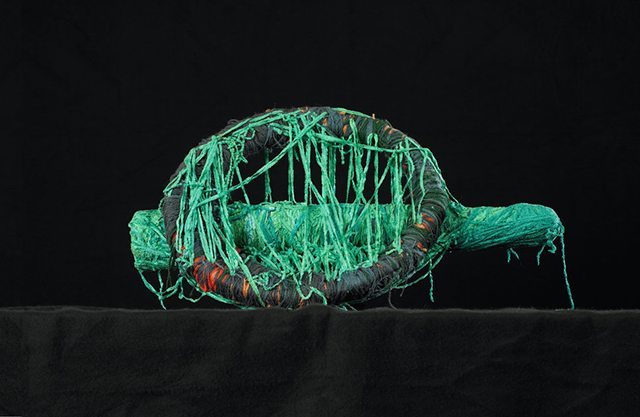
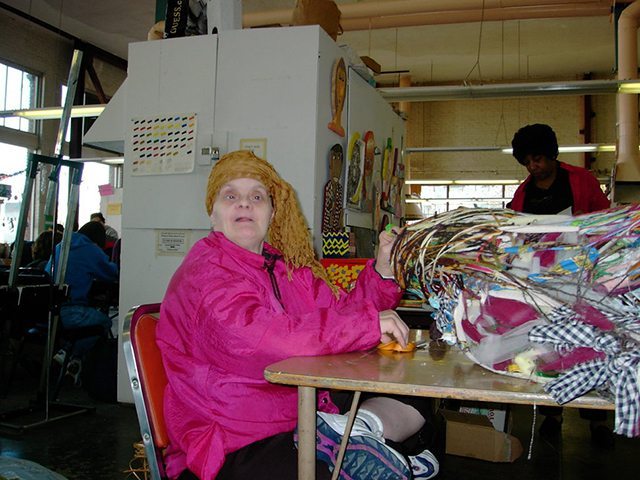



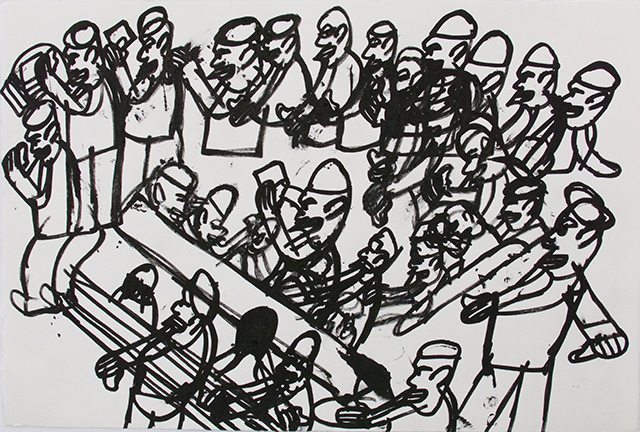
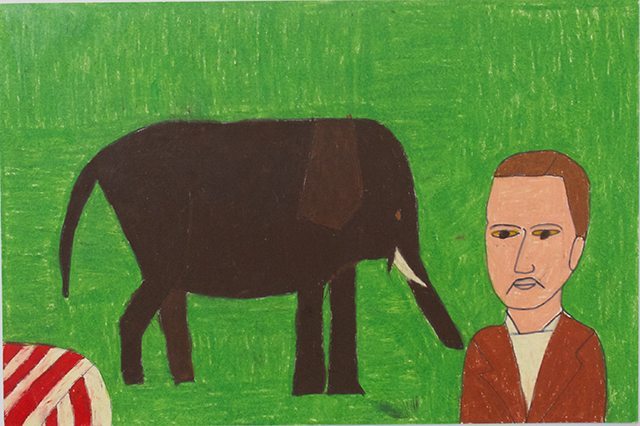
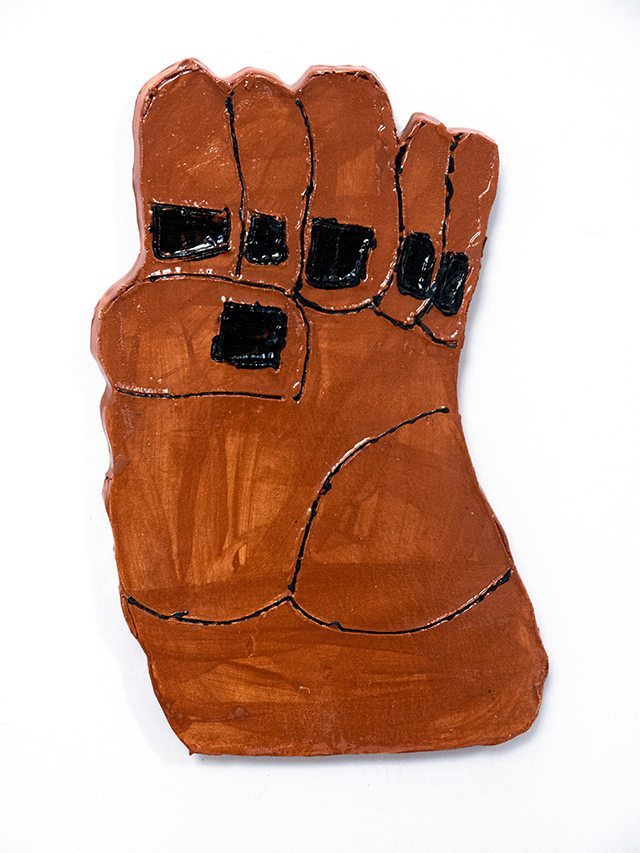

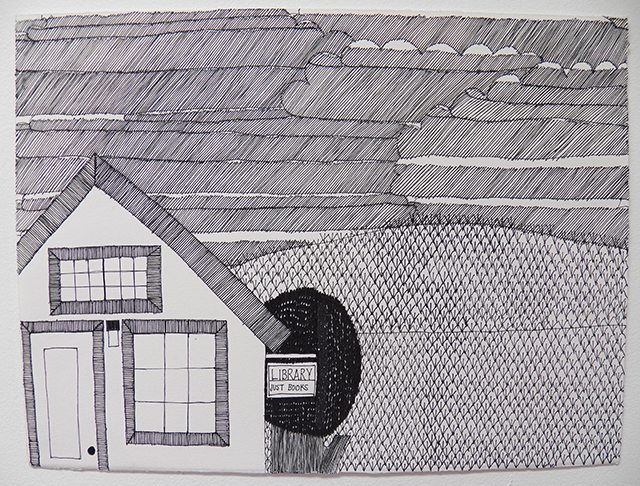


 Meet the Disabled Artists Creating a New Space for Talent in the Art World
Meet the Disabled Artists Creating a New Space for Talent in the Art World




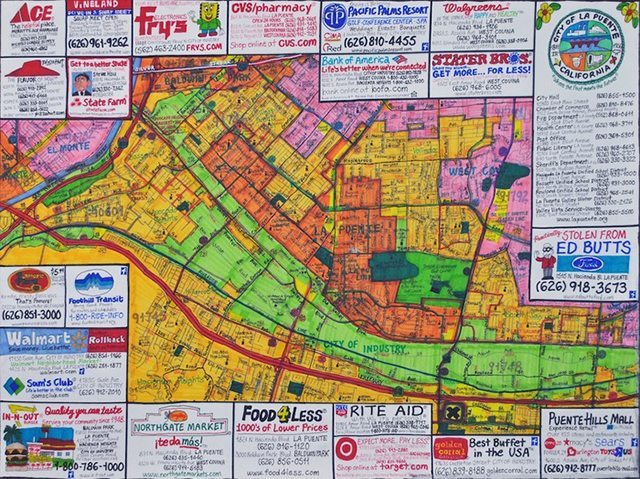

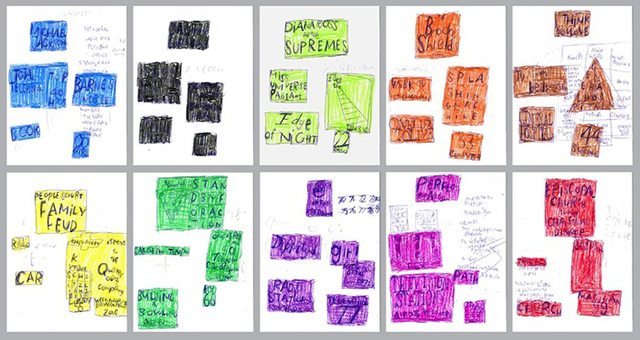
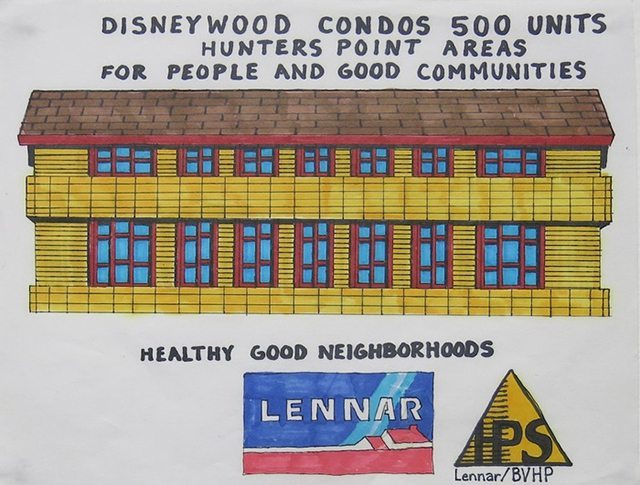
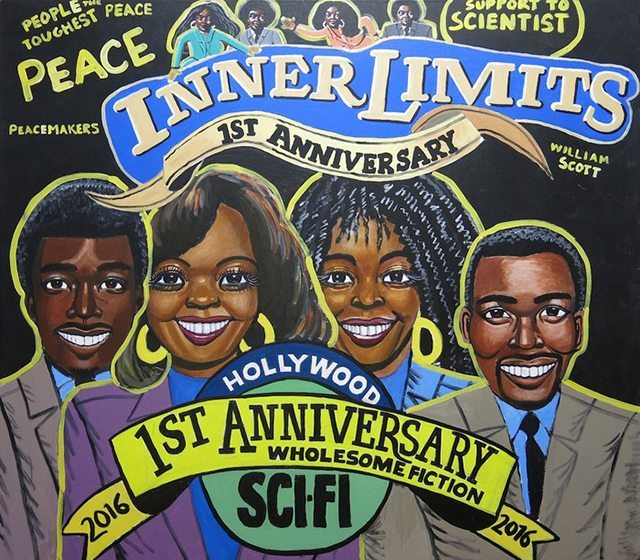

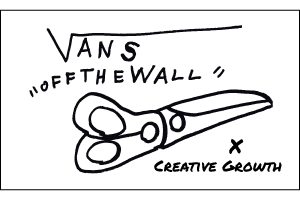
 Olivia Kim, Director of Creative Projects for Nordstrom, invited Creative Growth artists to collaborate as Pop-In@Nordstrom celebrates the 50th anniversary of Vans, the iconic skateboarding and lifestyle shoe company.
Olivia Kim, Director of Creative Projects for Nordstrom, invited Creative Growth artists to collaborate as Pop-In@Nordstrom celebrates the 50th anniversary of Vans, the iconic skateboarding and lifestyle shoe company.


